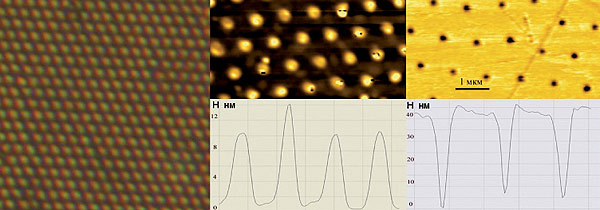Нанооптика
В ИПФ РАН под руководством Н. М. Битюрина исследуются физические основы и разрабатываются методы лазерного наноструктурирования поверхности и объема твердых тел.
В настоящий момент основным способом создания твердых наноструктур произвольной трехмерной конфигурации является лазерная нанополимеризация. Структуры образуются прямой записью сфокусированным лазерным пучком, инициирующим фотополимеризацию в соответствующей среде. Данная технология востребована в фотонике, микрофлюидике, в задачах трехмерного хранения информации, а также в биомедицинских приложениях.
Важным вопросом является разрешающая способность этого метода создания трехмерных наноструктур. В ИПФ разработаны теоретические модели, позволившие оценить минимальные размеры структур, обусловленные флуктуационными неоднородностями получающейся в результате полимеризации сетки зацепления макромолекул – геля, и предложены способы увеличения разрешающей способности.
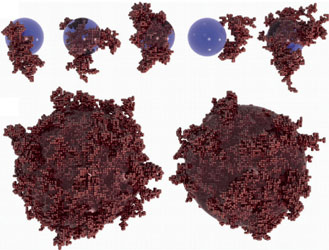
Теоретически показано, что диффузия специально введенного ингибитора может приводить к улучшению разрешающей способности при создании наноструктур методом лазерной полимеризации.
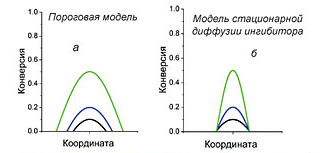
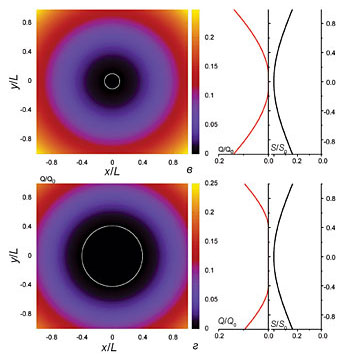
(в, г) – пространственное распределение концентрации ингибитора. В случае (в) лазерная интенсивность меньше, чем в случае (г).
Правый черный профиль – часть лазерного пучка вблизи максимума интенсивности, размер области локализации полимеризации может быть существенно меньше радиуса лазерного пучка
Этот эффект экспериментально проверен совместно с лазерным центром IESL FORTH (Гераклион, Греция). Введением ингибитора в полимеризационную среду и выбором режима облучения, при котором диффузия ингибитора существенна, получены образцы фотонных кристаллов из гибридного органо-неорганического полимера с периодом решетки 400 нм. Это лучший результат, полученный с помощью традиционной многофотонной лазерной полимеризации.
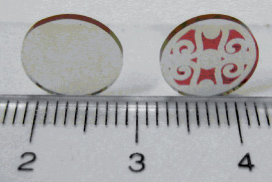
При создании наноструктур методом наносферной литографии, т. е. путем предварительного нанесения на облучаемую поверхность слоя микронных диэлектрических шариков, которые играют роль ближнепольных линз, необходимо учитывать эффекты электродинамического взаимодействия фокусирующих объектов. Этим методом на поверхности органических и неорганических стекол были получены структуры с размерами 100 нм благодаря эффектам лазерной абляции и свеллинга.
Другой способ создания наноструктурированных материалов – лазерное воздействие, которое приводит к образованию нанокластеров или нано-неоднородностей в исходно однородном материале вследствие развивающихся неустойчивостей. Появление неоднородностей приводит к существенному изменению оптических свойств этих материалов, что имеет большое практическое значение. Особое значение приобретает создание материалов, способных наноструктурироваться таким образом. В ИПФ РАН разработана методика УФ индуцированного создания наночастиц золота непосредственно в твердой полимерной матрице, допированной прекурсором золота, без введения специальных восстановителей и стабилизаторов. Разработана технология создания методом полимеризации объемных образцов с рекордно большой концентрацией прекурсоров золота (~1019 см-3). При помощи УФ лазерного облучения образца возможно формирование в полимерной матрице двух- и трехмерных структур.
С помощью усовершенствованного метода измерения быстрой оптической нелинейности путем двухволнового смешения со спектральным разрешением с применением фемтосекундного эрбиевого волоконного лазера было показано, что образование наночастиц золота приводит к существенному увеличению нелинейного коэффициента преломления среды на длинах волн 1530–1600 нм (ИК-область) в УФ облученных областях.
